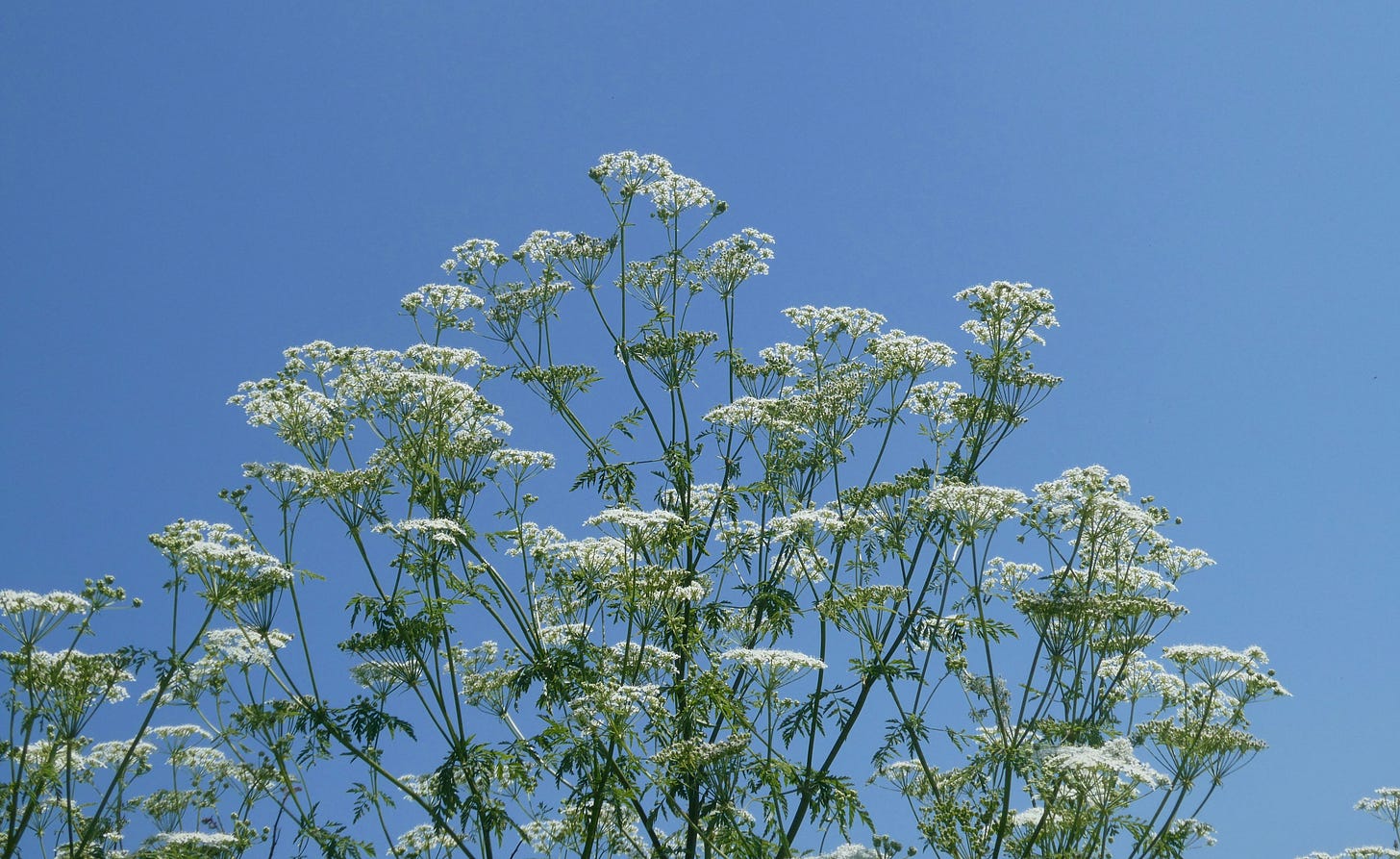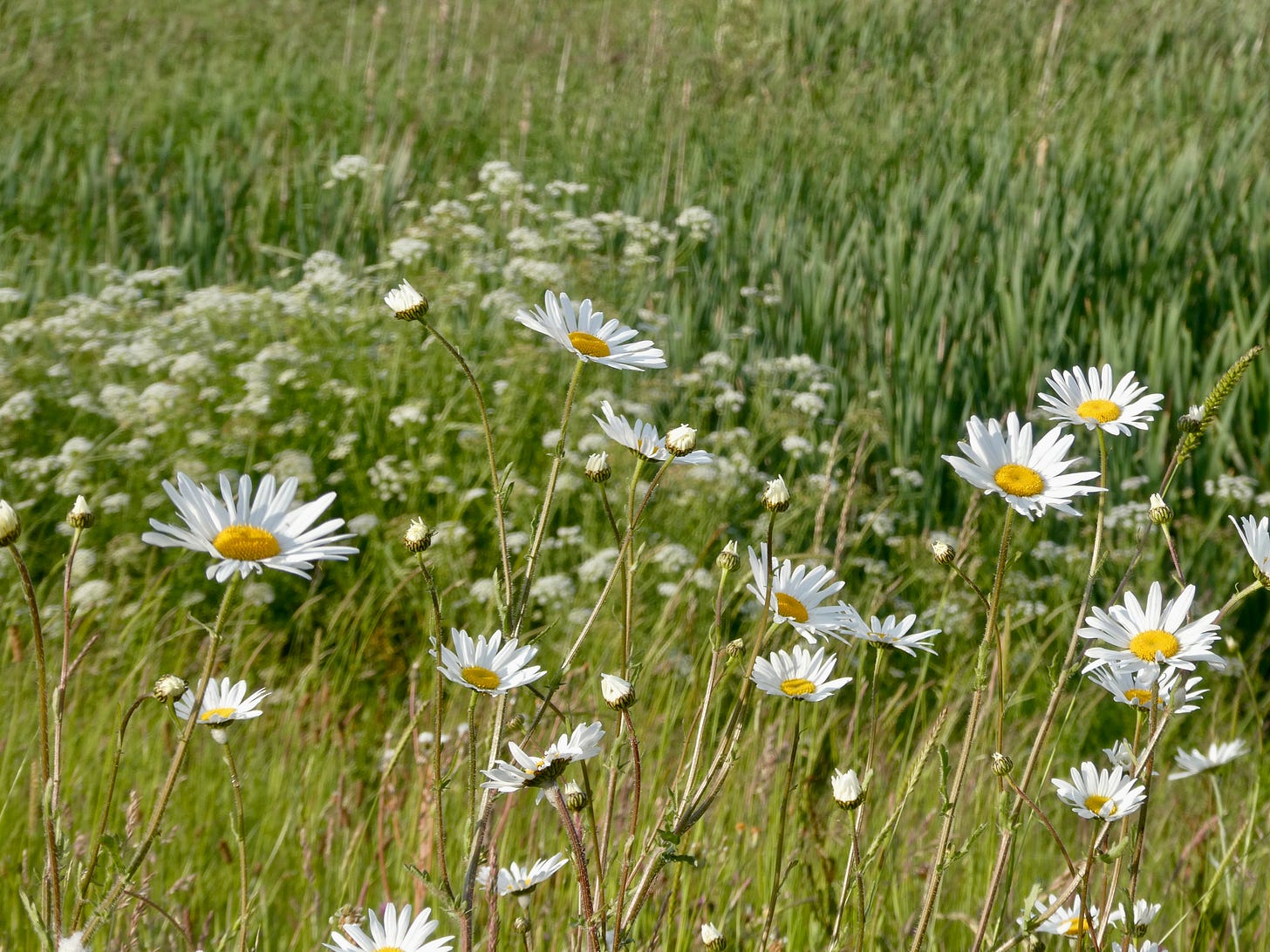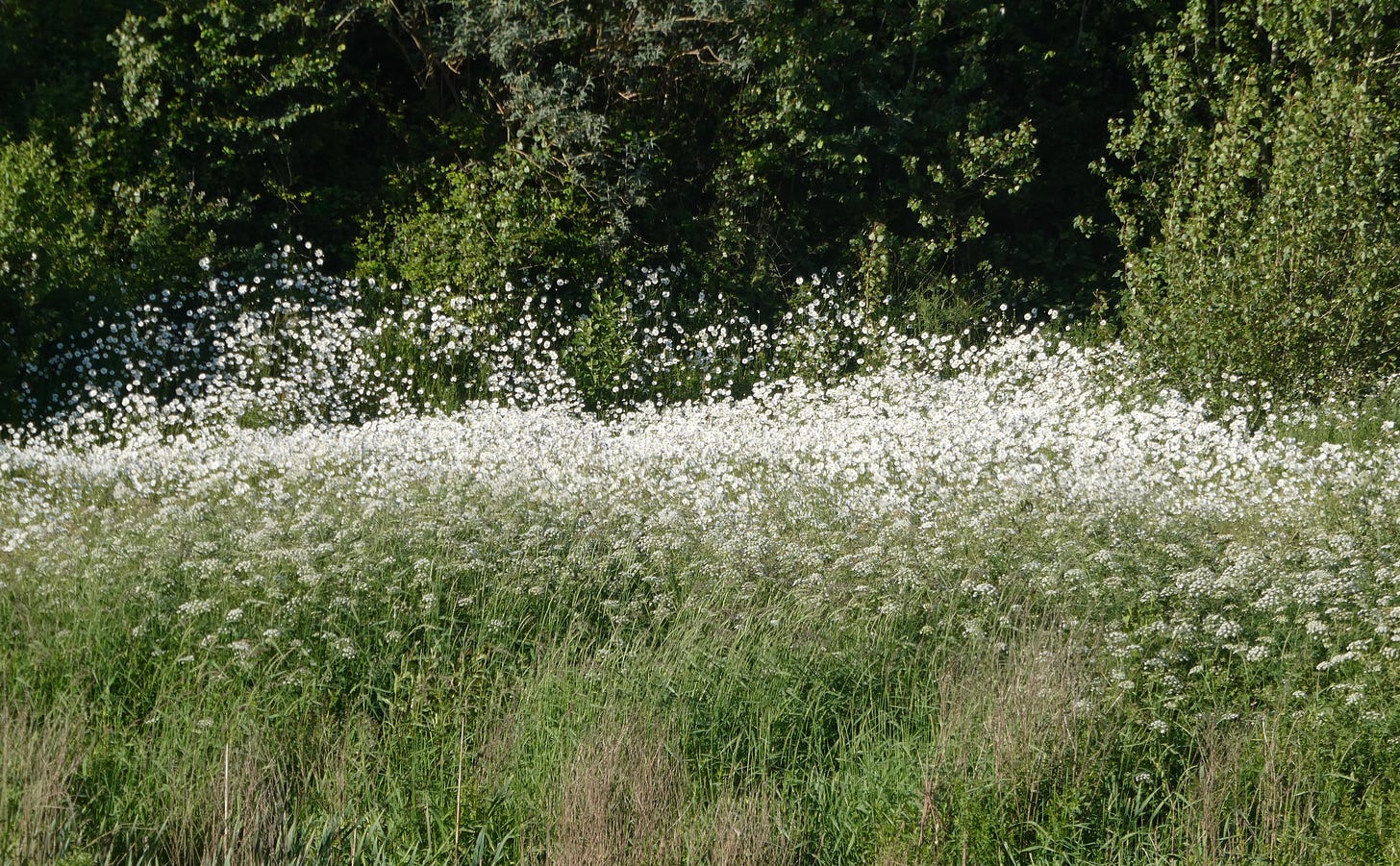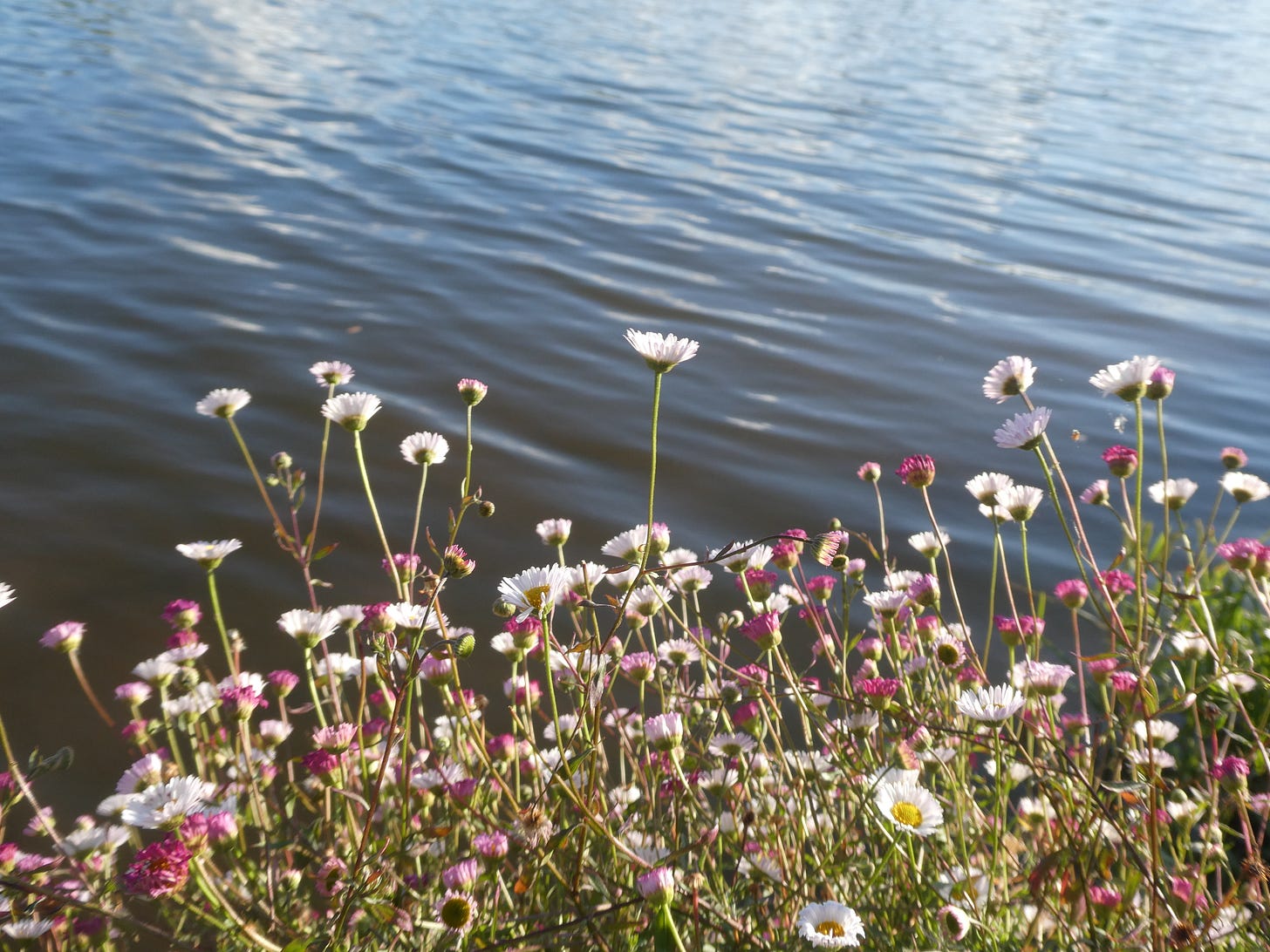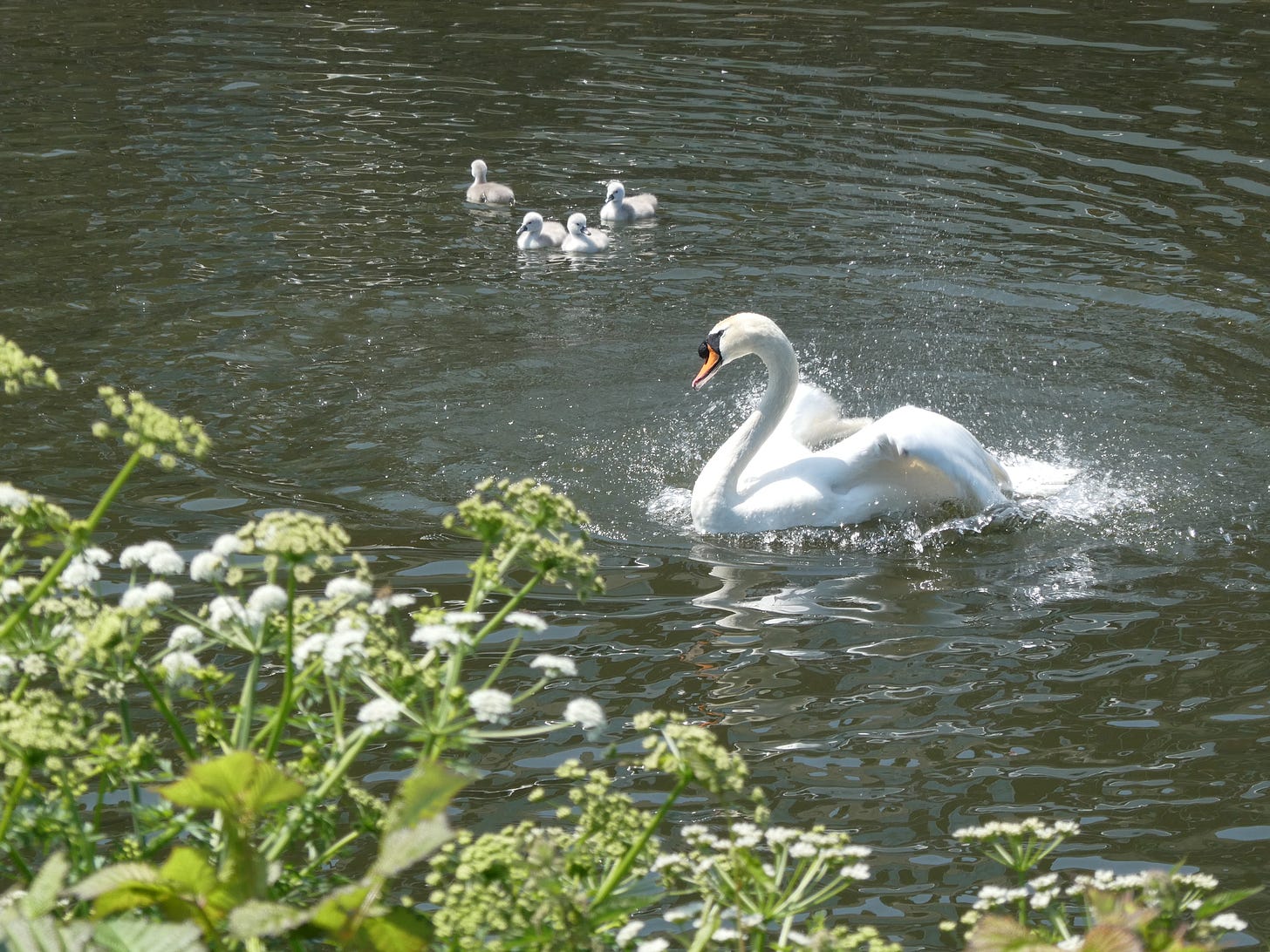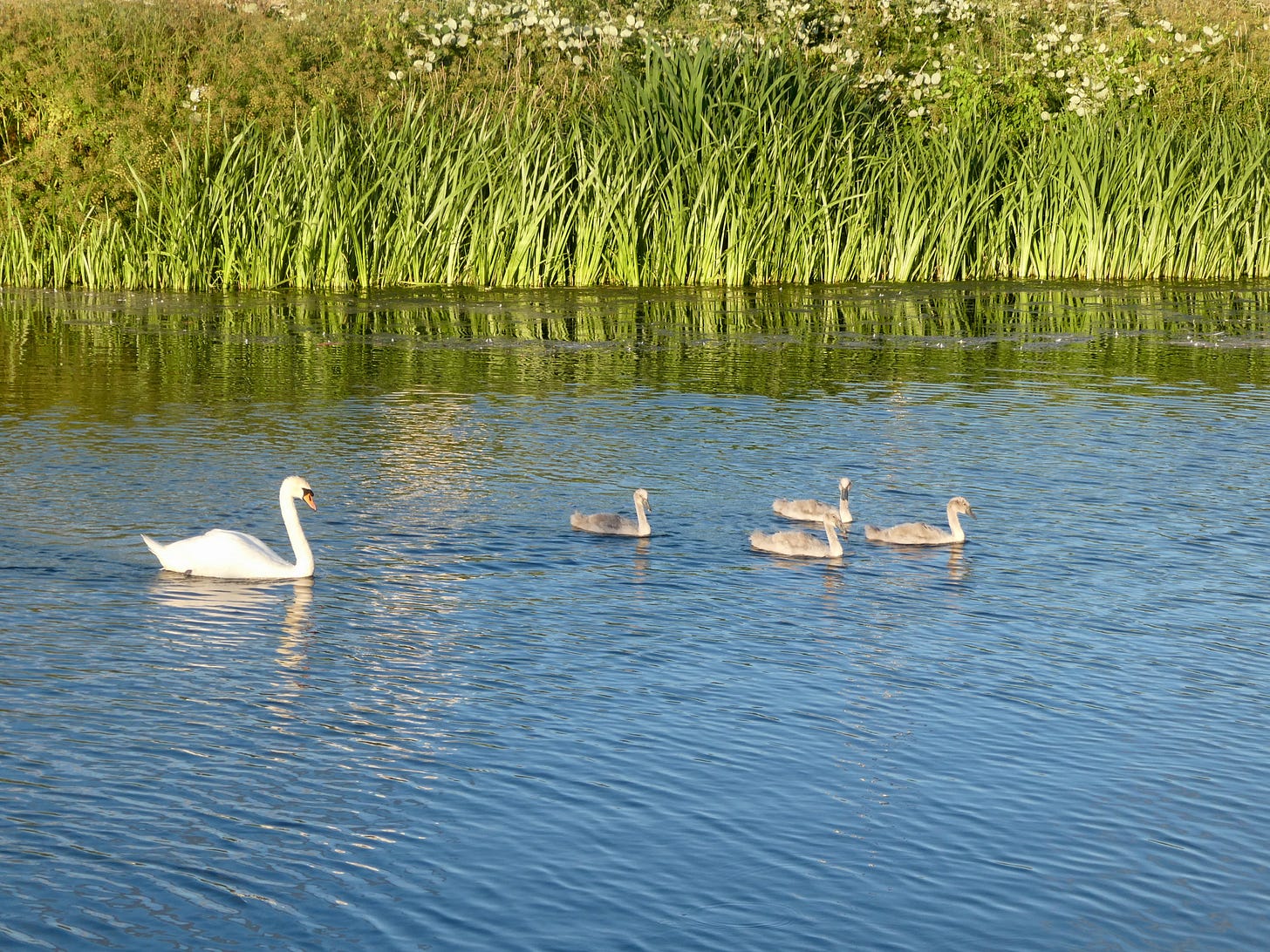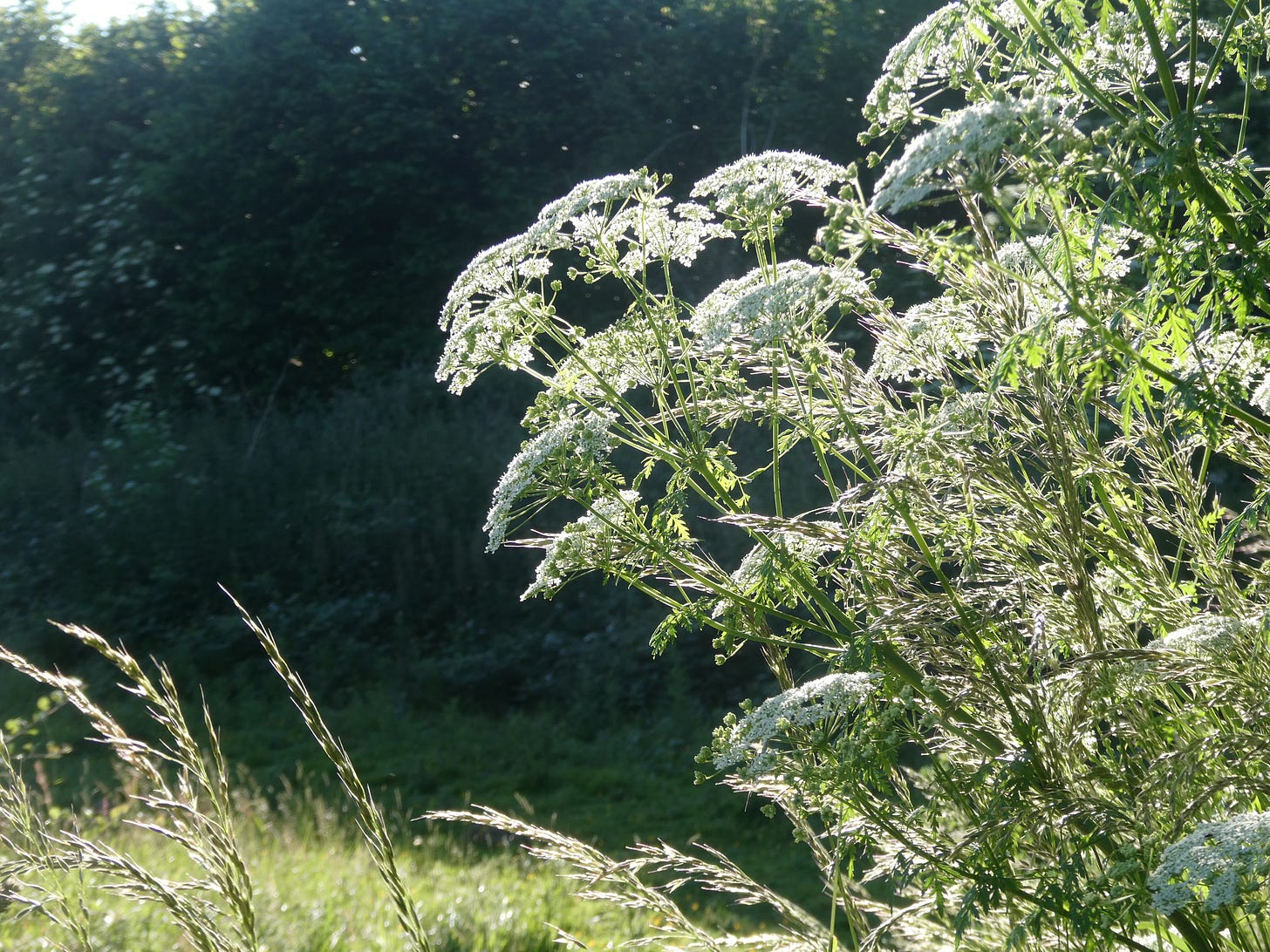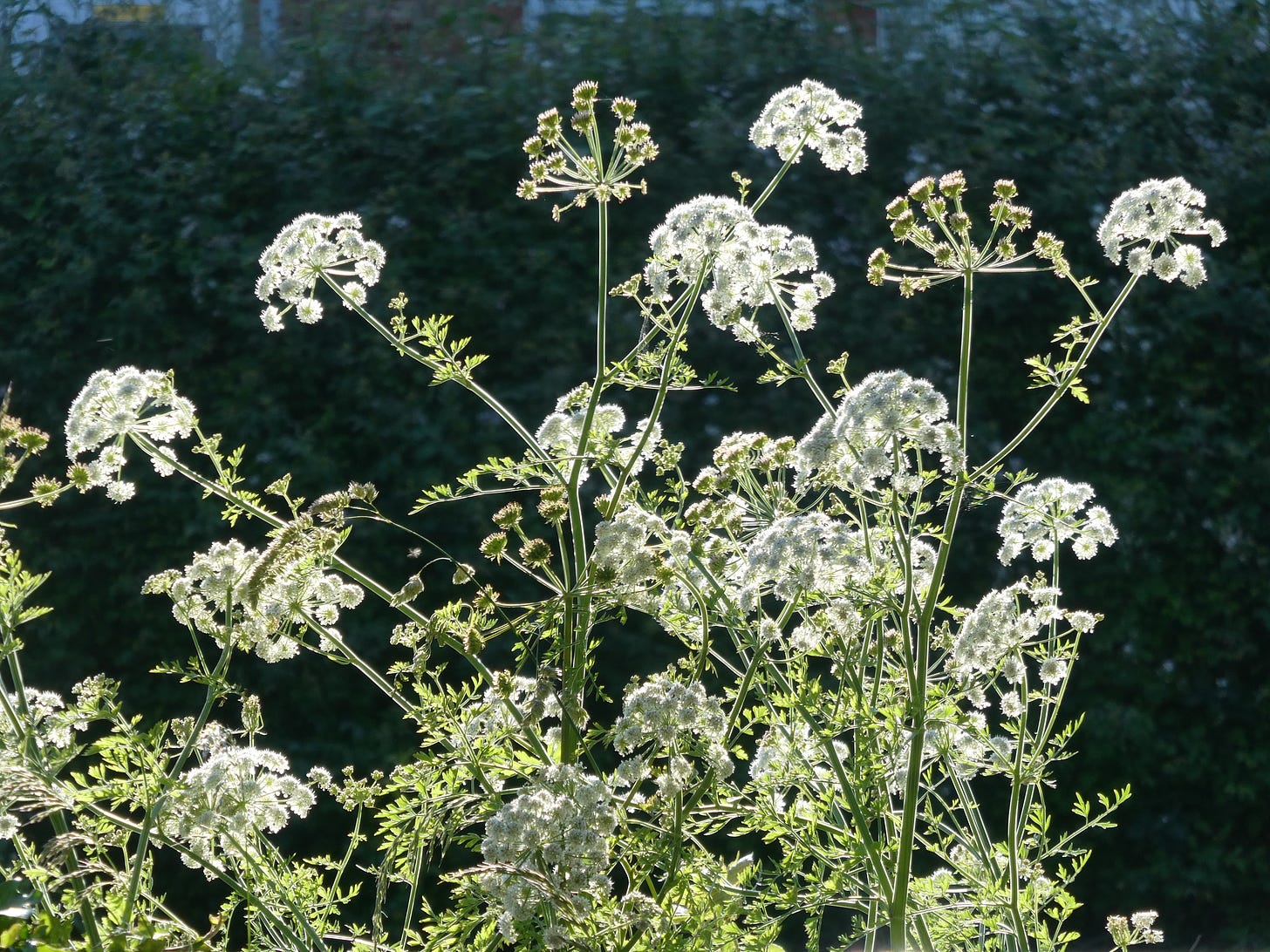Green and White
'Last year is dead, they seem to say, Begin afresh, afresh, afresh.' (Philip Larkin)
A couple of years ago I was walking down the canal near where I live and noted the bridal arches of Queen Anne’s Lace flowering abundantly on either side of the path. Not an archway in the proper sense of the word, but a frame for the path, one that it would take an experienced florist some time to recreate from cut branches.
This year I have been to two weddings that both had a green-and-white theme. Amazingly, given the variable weather in late spring, the weather was really good for both: sunny and dry, but not too hot. On the day of the first wedding, the hawthorn was blooming. By the second, there was still some hawthorn around (including in some of the wedding decorations), but elderflower was beginning to bloom too. It struck me that the hedgerows and trees turn from shades of brown and ochre with spashes of red, through to green, and then sprinklings of white begin to appear. White and green really are the dominant natural colours in April, May and early June, after the rains of spring and before the really warm weather kicks in. Besides the aforementioned Queen Anne’s Lace, there’s also cow parsley, hogweed, hemlock and that whole variety of plants with long stems and white flowers, plus several other plants which have profuse white flowers including bramble, whitebeam, rowan and elderflower.
Life has been rather too busy of late, which is one reason I’ve not kept up with posting here, but nature has been a deep balm nonetheless. The meadows too have their seasons: first the buttercups, then the red clover, and at this time of year the ox-eye daisies are really prominent, with the bright purple knapweed to follow. I’ve noticed ox-eye daisies before, of course. But is it just me, or are they having a really good year this year? I’ve seen places where there are thick snowdrifts of ox-eye daisies.
Oversized daisies on tall stalks, waving about in the breeze. So bold. Walking past, I imagined a father somewhere, telling their child that these were just normal daisies that had eaten their crusts or been particularly well-behaved. They would make great parasols for tiny fairies too.
The fleabane (erigeron or Mexican daisies) also seems both ubiquitous and profuse: I ended up glancing down at some recently and thinking ‘at least someone’s having a good year.’ Of course this is always true in some sense, that while one person’s life ebbs or wanes another person is like a rising star, having their moment. It’s all swings and roundabouts, as they say. Or peaks and troughs.
The swans, however, didn’t have a great year in breeding terms. I saw one swan pair who had a decent-sized brood, but another swan family appear to have ended up with just one cygnet, and another are on their second attempt at nesting because their nest got flooded. The weather that seems to have benefited the daisy family has not been so helpful for our local swans. Very possibly, climate change has contributed to this, and almost certainly the proximity of these two swan nests to humans has not helped - I have certainly seen swans leave their nests when a dogowner allows their dog to get too close. It is a reminder to be responsible stewards and not forget the part we have to play.
One evening I saw a hobby hawk too, whizzing about in the early summer sky one evening. Exeter has has lots of house martins and swifts, which love to hunt along the river for flies, and the hobbies predate on them (as well as hunting dragonflies apparently!). If you see a hobby having a good day, there’s probably a swift having a bad one.
For various reasons, I’ve been thinking quite a lot about ageing this year and mortality, and the fragility of life more generally. The ebb and flow of the seasons, each thing taking its turn (which I’ve written about on this Substack before) is a comfort. There’s a lot of evidence that being near water is good for our mental health, the colour green is thought to be calming, and there’s a connection too between enjoying nature and mindfulness, but for me there’s something else there I think, which I can’t quite put my finger on. Is it that nature is hugely consistent, in a world where many things are not?
In recent times, I’ve been trying to work on the discipline of being happy for others when their lives seem to have achievements, joys or privilege that mine does not. It is thankfully not very hard to be pleased for a loved one, and to celebrate with them. But if we turn to social media, the workplace, and the news, we can find many examples of more peripheral people, or even people we don’t know at all in real life, whose lives appear to consist solely of highs. If one is not feeling quite so successful, happy or privileged, then it is easy to feel a little bitter. I can put my hand up and say I am at times guilty of that. The answer to this is sometimes to just tune out. Occasionally, let’s face it, it is also entirely legitimate to feel cross or feel that things are unfair (they are). Sometimes, we need to reframe things (‘maybe this has gone well for them, but xx thing has not’) which I suppose is generally a healthy approach too? But I am also trying to get into a habit of thinking of all good news as good news in some sense. Nature is like that too, there’s good news somewhere. Just keep looking, if you need to.
Learning gratitude (and generosity to others) is an ongoing practice. It is easy to take nature for granted, but on an evening walk recently, I looked slightly askance at some flowering cow parsley, hogweed or water hemlock, (I’m still not sure which is which!) ‘who cares,’ I thought ‘it’s just cow parsley’, before giving it a second glance and realising that, in a few days time, this moment in nature’s calendar will have passed and those flowers will be gone. Another moment will be here, and hopefully we will see that too, but it won’t be this luminous moment.
Some things to spot right now:
Swifts, swallows, house martins - enjoy them in their season here with us.
It is a good time for wildflowers, from scarlet pimpernel to meadow cranesbill and cow parsley (et al.)
There are many pollinators about, so try spotting different ones.



